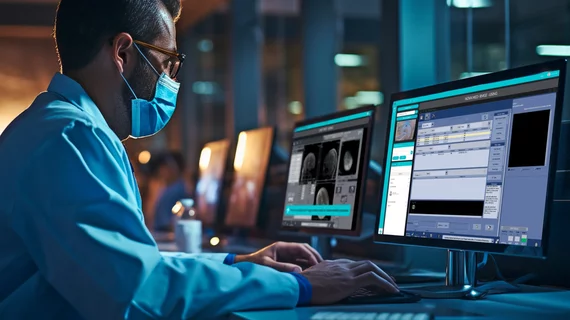Medicare to allow remote monitoring of diagnostic imaging exams for at least 1 more year
The Centers for Medicare & Medicaid Services is proposing to allow remote monitoring of certain diagnostic imaging exams for at least one more year, the agency announced Wednesday.
CMS first granted this perk in 2020 amid the COVID-19 pandemic, allowing physicians to continue delivering care while social distancing. However, the rule change is slated to expire by the end of 2024, prompting the American College of Radiology to advocate for making it permanent.
The administration is not going that far, but it is proposing to allow remote monitoring through 2025 under the Medicare Physician Fee Schedule.
“CMS continues to examine telehealth and its impact on access and quality,” the agency said in a July 10 news announcement. “Proposals in this year’s rule would allow CMS to maintain some important, but limited, flexibilities where possible and reflect CMS’ goal to maintain and expand the scope of and access to telehealth services where appropriate.”
The proposal would continue to permit practitioners to provide virtual direct supervision to auxiliary personnel “when required.” It also would temporarily extend remote monitoring for a broader range of items, when physicians virtually supervise telehealth services provided by residents in teaching settings. But unless Congress intervenes, restrictions on geography, site of service and practitioner type that existed before COVID will go back into effect on Jan. 1. After that date, Medicare beneficiaries will need to be in a medical facility in a rural area to receive many non-behavioral health services.
“We are supportive of the extension and would like it made permanent,” ACR told Radiology Business Thursday.
Attorney Tom Greeson—former counsel for the ACR and long-time attorney to radiology groups—offered his own take on the rule Thursday. He noted that CMS is proposing that the radiologists or other practitioners can provide virtual supervision for services “incident to” another physician service. For all other services—such as radiology studies with contrast, furnished under direct supervision of provider—the agency is allowing remote oversight via real-time audio and visual communication through Dec. 31, 2025. Currently, virtual direct supervision of level 2 radiology exams, such as MRI and CT with contrast, is in place only until Dec. 31 of this year.
“Even with the one-year extension, the failure of CMS to make virtual supervision permanent is certainly disappointing,” Greeson wrote. “Especially given the record of safety and efficacy of virtual supervision to date. For now, the industry is unfortunately left with uncertainty about long-time reliance on this supervision model. Unless CMS accepts recommendations that can be expected from the diagnostic imaging community for the need to make virtual supervision permanent, the use of virtual supervision in [independent diagnostic testing facilities] and physician offices appears destined to retain a sunset date, albeit one year beyond the current end date.”
For more on the proposed fee schedule, you can read this CMS fact sheet, the 2,248-page rule, and our coverage of the 2.8% cut to the conversion factor.

